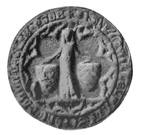Tewkesbury Abbey

The Abbey Church of St Mary the Virgin, Tewkesbury, commonly known as Tewkesbury Abbey, is located in the town of Tewkesbury in the ceremonial county of Gloucestershire, England. A former Benedictine monastery, it is now a parish church. Considered one of the finest examples of Norman architecture in Britain, it has the largest Romanesque crossing tower in Europe. Tewkesbury had been a centre for worship since the 7th century. A priory was established there in the 10th century. The present building was started in the early 12th century. It was unsuccessfully used as a sanctuary in the Wars of the Roses. After the dissolution of the monasteries, Tewkesbury Abbey became the parish church for the town. George Gilbert Scott led the restoration of the building in the late 19th century. The church and churchyard within the abbey precincts include tombs and memorials to many of the aristocracy of the area. Services have been high church but now include Parish Eucharist, choral Mass, and Evensong. These services are accompanied by one of the church's three organs and choirs. There is a ring of twelve bells, hung for change ringing.
Excerpt from the Wikipedia article Tewkesbury Abbey (License: CC BY-SA 3.0, Authors, Images).Tewkesbury Abbey
Church Street,
Geographical coordinates (GPS) Address External links Nearby Places Show on map
Geographical coordinates (GPS)
| Latitude | Longitude |
|---|---|
| N 51.990277777778 ° | E -2.1605555555556 ° |
Address
Tewkesbury Abbey
Church Street
GL20 5SA , Priors Park
England, United Kingdom
Open on Google Maps










